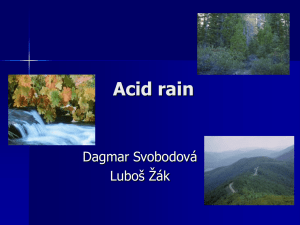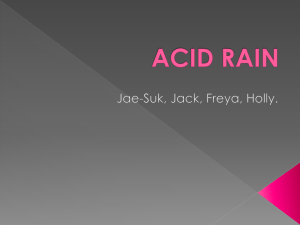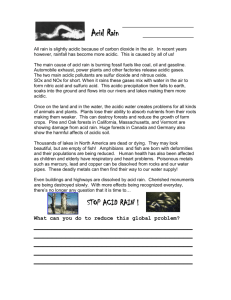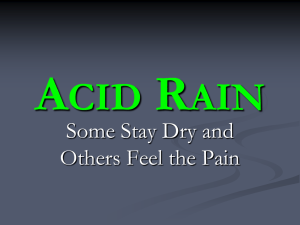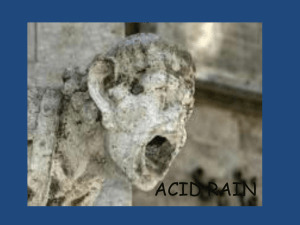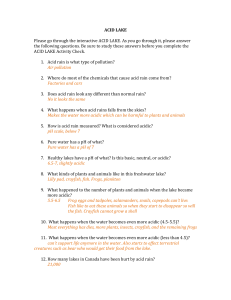Acid Rain mystery
advertisement
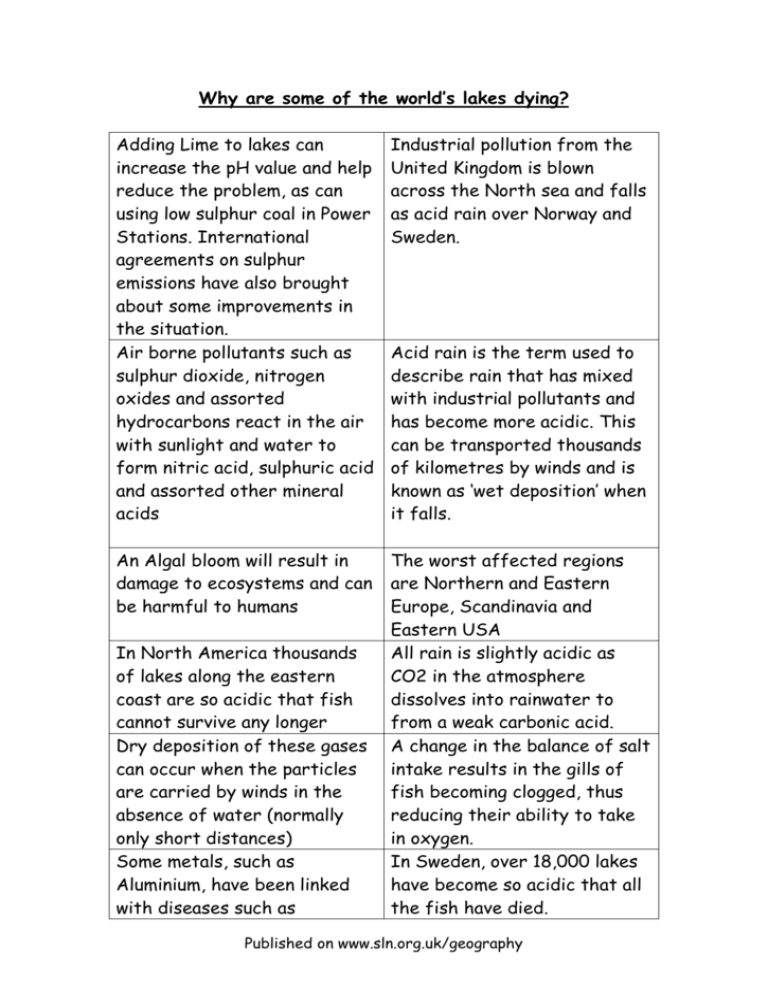
Why are some of the world’s lakes dying? Adding Lime to lakes can increase the pH value and help reduce the problem, as can using low sulphur coal in Power Stations. International agreements on sulphur emissions have also brought about some improvements in the situation. Air borne pollutants such as sulphur dioxide, nitrogen oxides and assorted hydrocarbons react in the air with sunlight and water to form nitric acid, sulphuric acid and assorted other mineral acids Industrial pollution from the United Kingdom is blown across the North sea and falls as acid rain over Norway and Sweden. An Algal bloom will result in damage to ecosystems and can be harmful to humans The worst affected regions are Northern and Eastern Europe, Scandinavia and Eastern USA All rain is slightly acidic as CO2 in the atmosphere dissolves into rainwater to from a weak carbonic acid. A change in the balance of salt intake results in the gills of fish becoming clogged, thus reducing their ability to take in oxygen. In Sweden, over 18,000 lakes have become so acidic that all the fish have died. In North America thousands of lakes along the eastern coast are so acidic that fish cannot survive any longer Dry deposition of these gases can occur when the particles are carried by winds in the absence of water (normally only short distances) Some metals, such as Aluminium, have been linked with diseases such as Acid rain is the term used to describe rain that has mixed with industrial pollutants and has become more acidic. This can be transported thousands of kilometres by winds and is known as ‘wet deposition’ when it falls. Published on www.sln.org.uk/geography Alzheimer’s. Scientists have recorded rain that was more acidic than Vinegar (pH 2.4) Leaching is the removal of soil minerals and nutrients down the soil profile by water. We burn fossil fuels in power Aluminium is washed into lakes stations to make electricity, in and reservoirs from the factories and oil refineries to surrounding land, often leading make plastics and similar to algal bloom products, and in our vehicles which produce huge amounts of nitrogen and carbon gasses. Increased leaching of soil nutrients leading to a drop in soil fertility Acid rain is not just a European problem; it occurs around the world. Tasks 1. Make piles of cards under the following headings: Identifying the issue Location Causes Effects 2. Describe the formation of Acid Rain 3. Which regions are affected most by Acid Rain? 4. What is the impact on people? 5. Why are lakes dying around the world? 6. How can this problem be resolved? (Give your own opinions as well as the facts when answering this question) Published on www.sln.org.uk/geography
